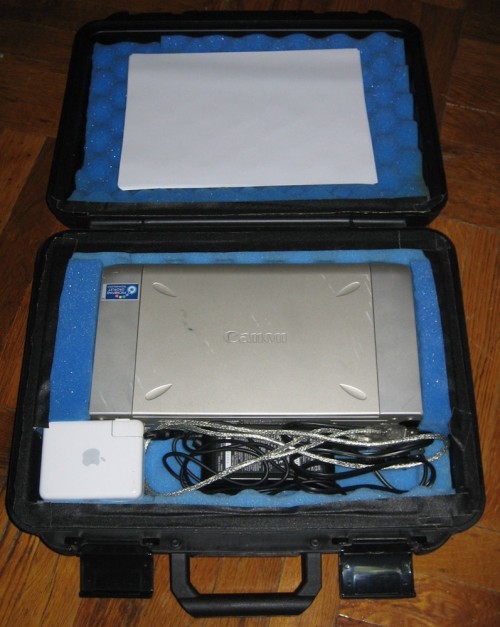Sometime over the summer, probably while it was sunny, I had a revelation: I was sick and tired of wearing glasses. They make it really inconvenient to wear sunglasses, they get tangled up in your hair, if you wear a headset for many hours a day, the headset can squeeze the ear hook on the glasses between your ear and head, which gets really annoying after 10 or 12 hours. If you’re really unlucky and have long hair, every time you remove your headset you’ll pull your glasses off, as well as yanking part of your hair out of place.
Not to mention you have clear vision through part of your field of view, but if you need to move your eyes but not your head, you have something blocking your view, and then blurriness on the edges. If I have my head down looking at my script and glance up, my script is clear but the stage is blurry, which is totally bass-ackwards for someone who is nearsighted. After wearing glasses with varying degrees of necessity since 3rd grade, I was fed up.
I was like, that’s it, when I get home I’m getting contacts! Then I was like, “that sounds expensive.” But then I was like, “wait a minute, my insurance gives me a free eye exam and glasses or contacts every 2 years!” And it had been 3 years since my last pair of glasses. So that was it.
I researched this the way anyone should: just before I returned home I posted a message on Facebook saying I was looking for a good eye doctor in Manhattan (preferably west side) who took the Equity insurance. I got 2 recommendations within a day. A well-known Broadway actress with a family, who lives in a classy neighborhood on the Upper West Side seemed like the most reliable source for a good doctor, so I started there. I was able to get an appointment with her doctor within a week, and got myself a new prescription for contacts. My last one was when I was 18, so I hadn’t worn contacts at all in years, because my prescription was so out of date.
I talked to the doctor a bit about touring to get his advice about sleeping with them, and how long I could safely leave them in. Since he’s a doctor, it was basically his job to say that some people leave them in a really long time with no problems, but if I sleep with them in or shower with them, I might be fine, or I might go blind. So… I’ve been pretty cautious.
Touring with Contacts
I’ve really enjoyed the switch to contacts in general. I’ve forgotten how much extra stuff you end up carrying around in your bag in exchange for not carrying glasses on your face. It’s not a problem if you’re living at home and put them in in the morning and take them out when you come home, but for touring (especially for someone like me who’s obsessive about carrying unnecessary things) it adds a couple extra items to the toiletries bag, and you will have to have access to drug stores to replenish your cleaning solution before it runs out. Plus, you still need to carry a pair of glasses as a backup (unless your job doesn’t require good vision — unfortunately mine does).
Sunglasses
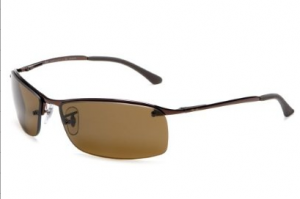 For the fall tour (which was all in California and Arizona) I brought along an old pair of sunglasses that I rarely get to wear, and had a great time being able to slip them on and off at will, without losing clarity of vision. I was so excited that during the hiatus I bought myself a nice pair of Ray-Bans
For the fall tour (which was all in California and Arizona) I brought along an old pair of sunglasses that I rarely get to wear, and had a great time being able to slip them on and off at will, without losing clarity of vision. I was so excited that during the hiatus I bought myself a nice pair of Ray-Bans. Unfortunately, sunny days have been few and far between since November — generally the only thing they’ve been useful for is preventing snow blindness when walking to the Guthrie, but I trust by the time we end the tour in Florida, they will be awesome.
Contacts When Sleeping on a Bus
The main challenge I’ve faced with the contacts is what to do when sleeping on the bus. Being in a hotel every night is a pretty straightforward process. You take them out when you go to sleep, leave them on the bathroom counter, wake up, shower, and then put them in. Then you leave the hotel with all your stuff.
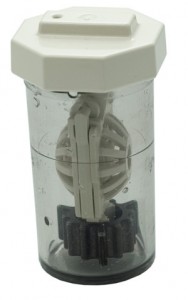 Living on the bus means you either take out your contacts before load-out is over, or take them out in the tiny bus bathroom, or take them out in the tiny bus bathroom while the bus is moving, which is an extra-fun time to stick your finger in your eye. Then you need a place to put your contacts case. I use the ClearCare case which holds the lenses vertically, and needs to be kept standing up. So I need a place where the case won’t fall over when the bus takes a turn during the night. Our wardrobe supervisor has provided us with some mesh hanging bags for our bunks, which are awesome for holding phones, wallets, glasses and whatever else, when gaff-taped to the side of our bunks. So far mine has failed at keeping my contacts safe, and I’m not sure I want to put the effort into actually sewing one of the pockets into a smaller size to hold the little container securely (since the whole thing has fallen off the wall a couple times anyway, as I noticed early this morning when I rolled over towards the wall and was like, “why is there gaff tape stuck to me?”) I think I need to come up with a better solution. I can think of a couple (a piece of foam the size of a soda can, with a hole in the middle for the container, which could be put in a cupholder), but will have to figure out which is easiest, most reliable, and least in everybody’s way if it has to be in a public (i.e. non-bunk) part of the bus.
Living on the bus means you either take out your contacts before load-out is over, or take them out in the tiny bus bathroom, or take them out in the tiny bus bathroom while the bus is moving, which is an extra-fun time to stick your finger in your eye. Then you need a place to put your contacts case. I use the ClearCare case which holds the lenses vertically, and needs to be kept standing up. So I need a place where the case won’t fall over when the bus takes a turn during the night. Our wardrobe supervisor has provided us with some mesh hanging bags for our bunks, which are awesome for holding phones, wallets, glasses and whatever else, when gaff-taped to the side of our bunks. So far mine has failed at keeping my contacts safe, and I’m not sure I want to put the effort into actually sewing one of the pockets into a smaller size to hold the little container securely (since the whole thing has fallen off the wall a couple times anyway, as I noticed early this morning when I rolled over towards the wall and was like, “why is there gaff tape stuck to me?”) I think I need to come up with a better solution. I can think of a couple (a piece of foam the size of a soda can, with a hole in the middle for the container, which could be put in a cupholder), but will have to figure out which is easiest, most reliable, and least in everybody’s way if it has to be in a public (i.e. non-bunk) part of the bus.
The Insurance / Doctor Stuff
I wound up paying a little more than I expected to, but it was still worth it. My exam was free, which included all the usual checkups (I chipped in a little extra for a glaucoma test, since it runs on both sides of my family and I’d never had one done — I don’t know how old people do it, it was like a very hard video game). Years of Nintendo and Playstation allowed me to pass with flying colors, and I don’t think I’ll do that again for a few decades if I don’t have any problems. The contacts weren’t completely covered, but I did get a discount on them. I was given a trial pair, which I wore diligently every day for a week, and went back for a quick checkup to check that the prescription was still the best for me (the doc said the contacts may sit differently on the eye after you’ve been wearing them for a while). I needed no change. So then I ordered a year’s supply, which arrived a week or two later.
I got monthly contacts, but I do wonder if it would be a better idea to have daily disposables for touring. It would certainly be easier because I’d avoid the whole hassle of figuring out what to do with them overnight when I sleep on a bus and might get to shower halfway through my workday. I don’t want to end up losing a lot of money by switching to contacts, but I think it might be affordable enough if I can find them cheaply online.
Overall
Overall I’m very happy with my decision to ditch the glasses. I still wear them occasionally (like yesterday when I sadly dropped a lens into the hotel sink, and was surely not putting it in my eye!), but far more often I’m wearing contacts or skipping any eyewear altogether on a lazy day off. It’s a little more challenging for touring, but I really enjoy not having glasses on my face, and being able to wear sunglasses easily, and the benefits to stage managing — having my whole field of vision clear, and not getting tangled in my headset — have been great.


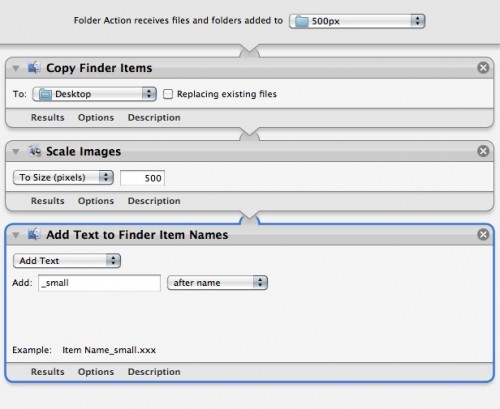
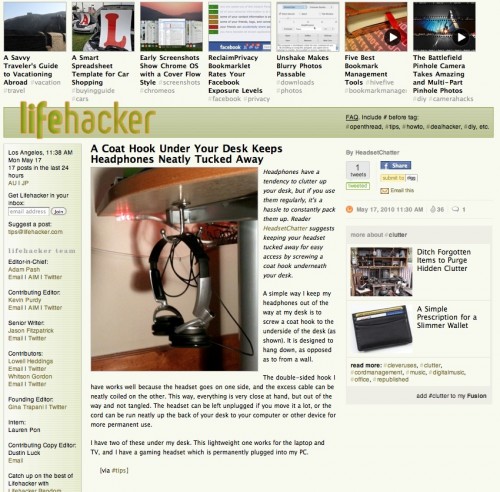
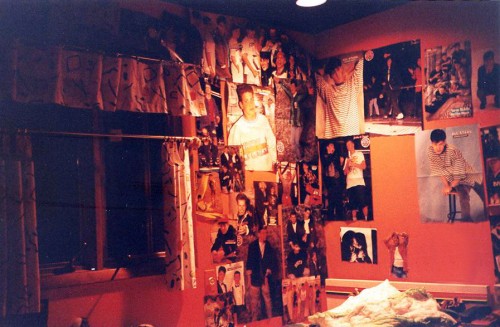

 I’m about to start rehearsals for a new show, which has got me thinking about getting all my goodies set up to take with me to rehearsal. One of my favorite ways of making things more efficient in the rehearsal room is to set up my own wireless network for the use of the stage management team, creative team, or even the actors who want to use a laptop or other wireless device on their breaks.
I’m about to start rehearsals for a new show, which has got me thinking about getting all my goodies set up to take with me to rehearsal. One of my favorite ways of making things more efficient in the rehearsal room is to set up my own wireless network for the use of the stage management team, creative team, or even the actors who want to use a laptop or other wireless device on their breaks.